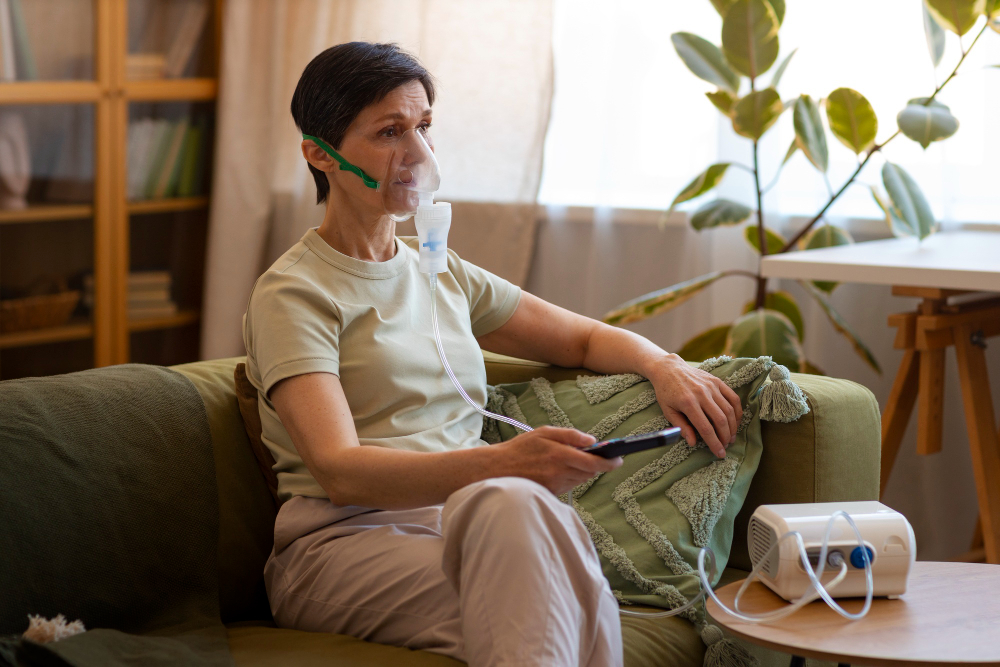
A Beginner’s Guide to Buying a Portable Oxygen Concentrator
Choosing a portable oxygen concentrator for the first time can feel overwhelming. With a
variety of models, features, and specifications available, making the right decision requires a
clear understanding of your needs and the options on the market. Whether you’re purchasing
for yourself or a loved one, having the right information can ensure you select a device that
provides freedom, comfort, and improved health.
This beginner’s guide walks you through everything you need to know to confidently choose
the best portable oxygen concentrator for your lifestyle.
Understanding Portable Oxygen Concentrators
A portable oxygen concentrator is a lightweight medical device that delivers concentrated
oxygen to individuals who have low blood oxygen levels. Unlike traditional oxygen tanks,
concentrators draw in ambient air, filter out nitrogen, and provide a continuous or pulsed
stream of oxygen-enriched air to the user.
These devices are battery-powered or electric and are designed to be easily carried or
wheeled around, giving users the freedom to travel, socialize, and continue their daily
activities without being tied to large, stationary equipment.
Identify Your Oxygen Requirements
Before shopping for a portable oxygen concentrator, it’s essential to understand your
specific oxygen needs. Your doctor or respiratory therapist can prescribe the appropriate flow
rate measured in liters per minute (LPM) or suggest a pulse dose setting.
Some devices are designed for low-flow needs, while others can support higher, continuous
flows. Make sure the model you select matches your medical prescription to ensure optimal
oxygenation.
Pulse Dose vs. Continuous Flow
There are two primary types of oxygen delivery in portable concentrators:
Pulse Dose: Oxygen is delivered only when the user inhales. These units are more
energy-efficient and have longer battery life. They are lighter and more compact,
making them ideal for active users.
Continuous Flow: Oxygen flows continuously regardless of the breathing pattern.
These units are bulkier and heavier but are necessary for individuals with higher
oxygen requirements, especially during sleep or exercise.
Choosing between these two depends on your oxygen prescription, lifestyle, and whether you
need oxygen during sleep.
Key Features to Consider
When evaluating different portable oxygen concentrators, keep the following features in
mind:
Battery Life: Look for a unit that offers a battery life compatible with your daily
schedule. Some devices offer long usage times on a single charge with extended
batteries.
Weight and Size: Choose a concentrator that is light enough for you to carry or roll
comfortably. Units can range from a few pounds to heavier models.
Noise Level: Quieter devices are more discreet and comfortable, especially in public
or during sleep.
Ease of Use: Devices with simple controls, clear displays, and intuitive settings make
daily operation stress-free.
FAA Approval: If you plan to travel by air, ensure the device is approved by the
Federal Aviation Administration (FAA) for in-flight use.
Warranty and Support: A solid warranty and responsive customer support can offer
peace of mind, especially if maintenance or repairs are needed.
Assess Your Lifestyle Needs
Your lifestyle plays a critical role in selecting the right portable oxygen concentrator. Think
about your daily activities:
- If you love traveling, hiking, or going to events, prioritize lightweight models with
long battery life. - If you mainly need oxygen during rest or sleep, a slightly heavier model with
continuous flow capabilities may be acceptable. - For those who need oxygen therapy 24/7, a unit that supports both pulse and
continuous modes with backup battery options is ideal.
Research Brands and Read Reviews
Brand reputation matters when buying medical equipment. Stick with reputable
manufacturers known for quality, reliability, and excellent customer service.
Reading user reviews and testimonials can provide valuable insights into real-world
performance, battery durability, noise levels, and comfort. Independent third-party review
sites are often a good source for unbiased opinions.
Maintenance and Care Requirements
Portable oxygen concentrators require minimal maintenance but keeping the device clean and
functioning properly is essential for long-term performance.
- Regularly clean air intake vents and filters.
- Charge batteries according to manufacturer guidelines.
- Schedule annual inspections if recommended.
Understanding these requirements upfront ensures that you’re prepared to care for your
concentrator properly.
The Importance of Professional Consultation
Before finalizing your purchase, consult with your healthcare provider or a respiratory
therapist. They can help you:
- Match your oxygen requirements to an appropriate device
- Adjust settings for optimal usage
- Train you on safe handling and maintenance practices
A professional consultation minimizes the risk of buying a concentrator that doesn’t meet
your needs and ensures a smoother transition to oxygen therapy.
Common Mistakes to Avoid
Beginners often make avoidable mistakes when purchasing a portable oxygen concentrator.
Keep these pitfalls in mind:
- Not verifying the flow rate matches the prescription
- Ignoring battery life expectations
- Overlooking the need for a second battery or backup plan
- Failing to test the device for comfort and usability before purchase
Avoiding these mistakes saves you money, time, and stress in the long run.
Final Thoughts
Buying a portable oxygen concentrator is a big step toward reclaiming mobility,
independence, and peace of mind. With careful research, professional guidance, and a clear
understanding of your health and lifestyle needs, you can choose a device that fits seamlessly
into your life.
Remember that the right concentrator isn’t just a machine; it’s a companion that helps you
breathe easier and live more fully.
